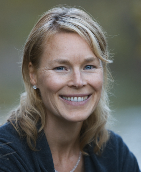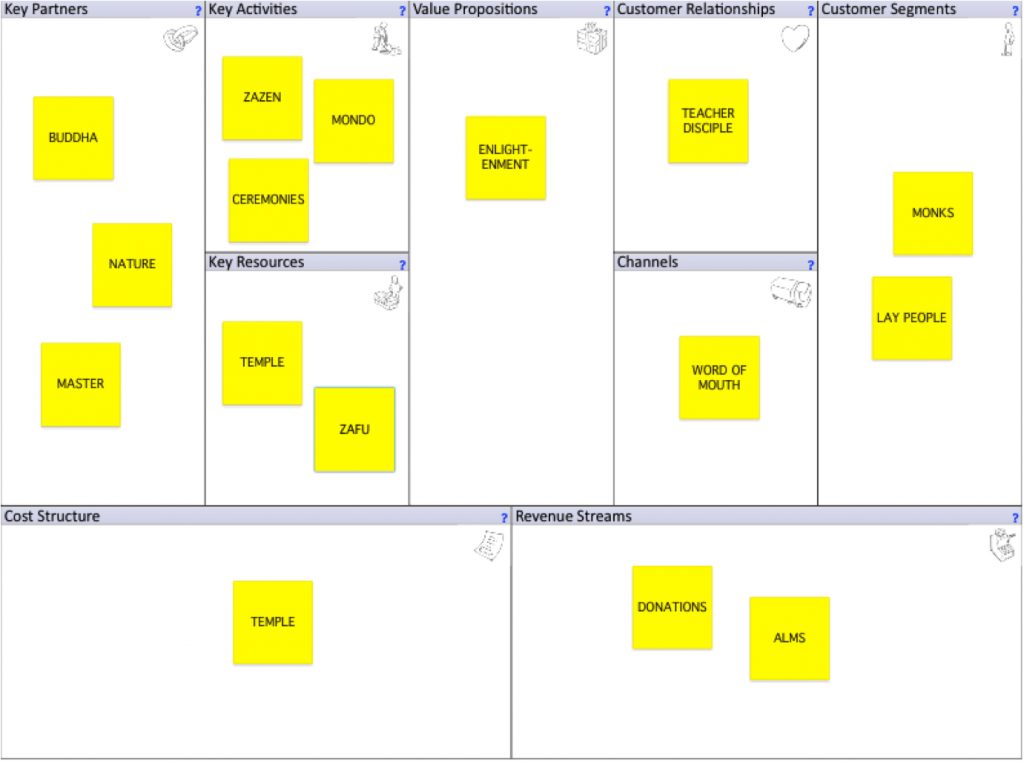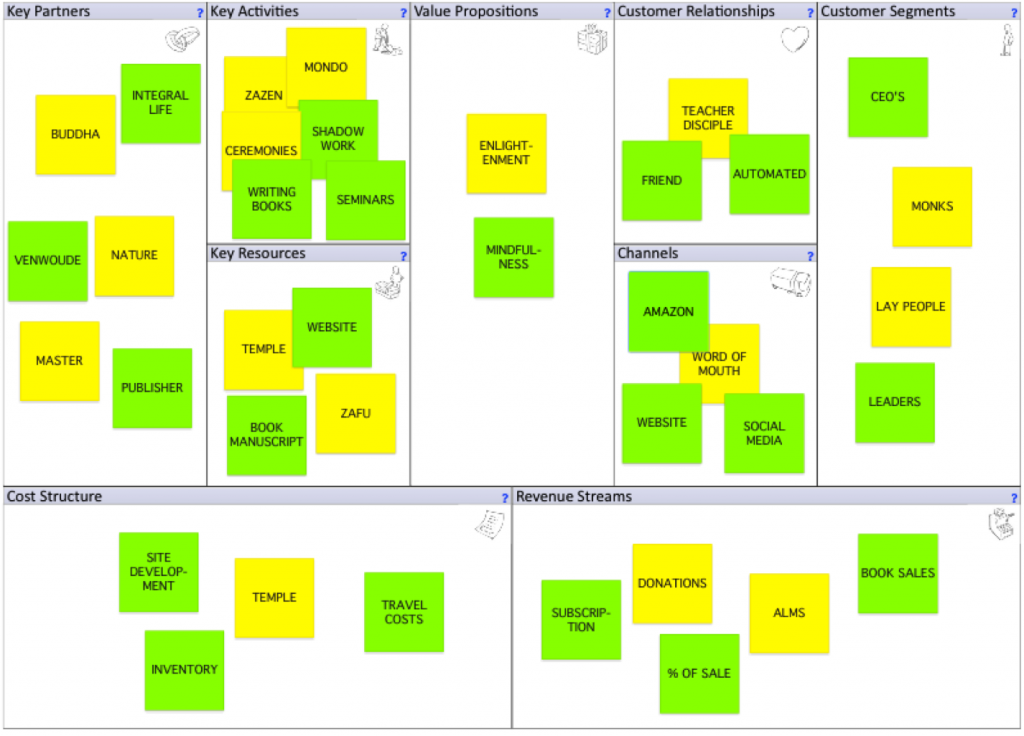Foreno Van Der Hulst and Willow Dea
Brief Background:
In preparation for the Embodying Integral Sustainability seminar, facilitated by Experience Integral in August, Willow Dea and I prepared a 90 minutes session on Profit and Business Model Generation.
Foreno: The motivation to do this was the following: During my master’s program in Sustainable Development, I was interested in learning more about economics and business, as these fields have such a big impact on the social and natural environment. In my work as a consultant in wind energy, I have seen that in the triple P bottom line. (People, Planet, Profit) Profit is often under-emphasized. In many projects, profit was not addressed sufficiently. I believe this is one of the reasons that it has been hard to scale and expand many sustainability projects. I’ve noticed that in the post-modern stage, it’s all too easy to become disillusioned and allergic to the modern achievement, profit and growth-oriented drives. I discovered the need to integrate the healthy aspects of orange/achiever action logic for more effective outcomes in my work and personal development.
Last year I was involved in several startup projects in the field of sustainability. I learned a lot more about the key building blocks for a successful business model, and was really interested in bringing this understanding forward for others’ benefit.
Willow: Business has the potential to be a powerful instrument for transformation in the world. My interest in social entrepreneurship started in 2005, when I was ‘shopping’ for business models that were financially self-sustaining and mission driven. After attending the Global Social Venture Contest, at the Haas School for Business, I left knowing that many heartfelt missions could be fruitful with a thoughtful business model backing them up. Conscious Capitalism, the first conference in Austin, TX provided a second opportunity to witness business leaders embodying the practices of a triple bottom line. It was clear that this group could transform the prevailing worldview toward more sustainable ends.
Catalyzing the development of other people is a natural proclivity for me. So, offering this presentation was a natural extension of my interest in business, transformation and the evolution of conscious business model generation.
The Session:
The three primary building blocks for the session, included shadow work and embodiment exercises around money and profit, followed by an introduction to the nine building blocks of a business model; and time to generate a draft business model.
We used a template drawn from “Business Model Generation” by Alexander Osterwalder & Yves Pigneur. This text influenced our discussion very directly.
Shadows around Money and Profit
We started this exercise with arranging people in dyads to work through their relationship to money and profit using the method Integrative Awakening, developed by Neil Cohen. This method is psychospiritually oriented and somatically based. It tends to access information from the body directly, versus the mind’s interpretation of a feeling.
It’s extremely powerful and direct, which is why we chose this modality.
We instructed the participants to decide who would be the “explorer” and the guide, respectively. The role of the guide was to offer short sentence stems to the explorer and to reflect the answers back to the explorer without changing the content at all. The most important element of the guide’s role was to hold space from the deepest state of consciousness that they could access in that moment. The practice was to try to be like a clear mirror: just reflecting the answers of the explorer without judgment or personal reflection.
The explorer was asked to center their full awareness and attention in the anatomical heart area. We took plenty of time to allow people to slow down, and physically access that level of engagement and awareness. As explorer some found that it was helpful to put a hand on their heart and breath it.
When the guide offered a sentence stem, the explorer was instructed to speak from the heart. Explorers were strongly encouraged to try to answer by listening to the words that arise directly from the heart, not the mind. One solid indication of speaking from the heart directly was that the answers were short and direct in nature. Once they finished the sentence, explorers were asked to be open to receive the sentence again as the guide reflected it back to them. Being aware of bodily responses, while staying connected to the heart was the central practice. We asked explorers to redirect their attention to their bodies, until they’d answered all of the sentence stems.
Diving deeper with each sentence stem allowed the wisdom of the heart and body to settle, and reveal more refined layers of experience. The mind might think that it’s completed this sentence already, while the heart and body offered them the opportunity to go a layer deeper to discover more of the insights yet unfound.
Sentence stem examples:
- Profit is….
- I feel my relationship to money as…
- People with money are…
- People without money are…
- With money, I am…
We asked the explorers to shift their attention after they felt a sense of completion, or after a fixed amount of time. We invited them to notice the immediate surroundings, and to get oriented to a wider perspective again. We asked them to look around the room and talk about what they saw, or to find something “New and Good” to reflect upon.
We then asked them to exchange roles and complete the exercise again, inhabiting the opposite role.
The 2nd exercise involved role-playing.
First: In small groups of 2 to 4, participants embodied the role of the big spender with lots of money, then shifted to penny counting scrooge. They were asked to really enact each role fully, and to notice the sensation of doing so. Did the role feel natural or was there tension or resistance arising? Following this, we asked the whole group to move into one area of the room to mix and mingle together, as if they were at a cocktail party. We asked them to take on the most unfamiliar and /or uncomfortable role first. They stayed in this role for about 10 minutes, acting as fully out of that perspective/archetype as they could manage.
At this point, we recognized that we didn’t have time, but had there been time, we would have: paused for a minute. We would have asked each participant to switch to the other, more familiar/comfortable role for ten minutes. At the end, we would have gotten the group together, to debrief and share about their experience for about 10 minutes in brief phrases. Themes would have been captured.
Business Model Generation
We posted this question: Who or what is your Business Model?
Is it Steve Jobs, Oprah or John Mackey?
In the media, most attention goes to the individual that founded the business. While there is great value in having positive role models, all of these great business minds also have a structural and systemic way in which they have build and set up their businesses. Even though you might not think of yourself as being in a traditional business setting, developing a thoughtful business model is essential. As Tami Simon from Sounds True, noted, “Even sages need a Business Model.”
A great tool to create, brainstorm and present Business Models is provided in the book Business Model Generation written by Alexander Osterwalder and Yves Pignuer. In their own words this books offers “… a handbook for visionaries, game changers and challengers striving to defy outmoded business models and design tomorrow’s enterprises…”
Business Model Canvas
After giving a short introduction into the different building blocks of the business model canvas. We invited the participants to choose a project they wanted to work on and fill out the business model canvas for that project. Than we went through the building blocks one by on and for each of the building blocks, we provided guiding questions and examples:
1. Value proposition:
- What value do we deliver to the customer?
- Which customer problem do we solve?
○ Newness
○ Performance
○ Customization
2. Customer segments:
- For whom are we creating Value?
- Who are our most important customers?
○ Mass market
○ Niche market
○ Diversified
○ Multi-sided platform
3. Customer relationships:
- What type of relationship does our customer expect?
○ Personal assistance
○ Self-service
○ Automated service
○ Communities
○ Co-creation
4. Channels:
- Through which channels can we reach our customers?
○ Sales force
○ Website
○ Social media
○ Stores
○ Partner stores
○ Wholesaler
5. Revenue Streams:
- For what value are our customers really willing to pay?
○ Sale of product/service
○ Usage fee
○ Subscription fee
○ Lending/Renting
○ Brokerage fee
○ Advertising
6. Key activities:
- What key activities do we need to perform?
○ Production
○ Problem solving
○ Platform development
7. Key resources:
- What key resources do our value propositions require?
○ Physical
○ Intellectual
○ Human
○ Financial
8.Key Partners:
- Who are our key partners?
- Who are our key suppliers?
○ Buyer- Supplier
○ Strategic alliance
○ Joint venture
9. Costs:
- What are the most important costs?
- How are costs divided between activities, resources and partners?
○ Fixed costs
○ Variable costs
○ Economies of scale
○ Economies of scope
Example of a business model for a Zen priest
A Contemporary Sage’s Business Model, we posited, might look like this:
About the Authors
Foreno van der Hulst, M.S. has a background in Medical biology and Sustainable development and has previously worked as a consultant in wind energy. He is currently working on multiple startups in the field of sustainability. After his first introduction to the Integral model at the Integral Leadership for Sustainable Evolution seminar of Experience Integral, he was and still is amazed by the amount of clarity the Integral model can provide. He stayed connected to Experience Integral after the seminar and has been helping with organizing community days. He is also part of the team that is designing Experience Integral 2.0 and the coming seminar. His personal practices include: Meditation, Journaling, Aikido, Tango, Experience Integral Practice group Utrecht . His key motivation in life is to increase consciousness and compassion. Foreno Van Der Hulst: forenovdhulst@gmail.com
Willow Dea, M.S. OTR, is deeply inspired by the impact of transformational practices in emerging educational systems. Her thirst for working with systems began with the human body. She holds a bachelor’s and master’s degree in occupational therapy, the science of human performance. As a relentlessly curious learner, she was certified in five additional modalities of human integration, which facilitate sustained peak performance. Willow used an integral approach to private practice and in educational settings for 15 years, providing leading edge services for people of all ages. She is currently the Executive Director for Advanced Integrative Training, a consulting and training group in Austin, TX. Willow is the Editor of Igniting Brilliance: Integral Education in the 21st Century. Willow Dea: willowdea@gmail.com





Foreno and Willow thanks for doing this session. It was a great reminder how powerful the tool is for subject/object relations. It enables you to get the subject that you are so fused with about the business possibilities out in front of you as an object that you can contemplate!! It inspired me to bring the Business Canvas into Integral City as a practice for Practitioners, Catalysts and Meshworkers. Great write up – love the Traditional and Contemporary Sage examples :-0. Thanks MUCH.